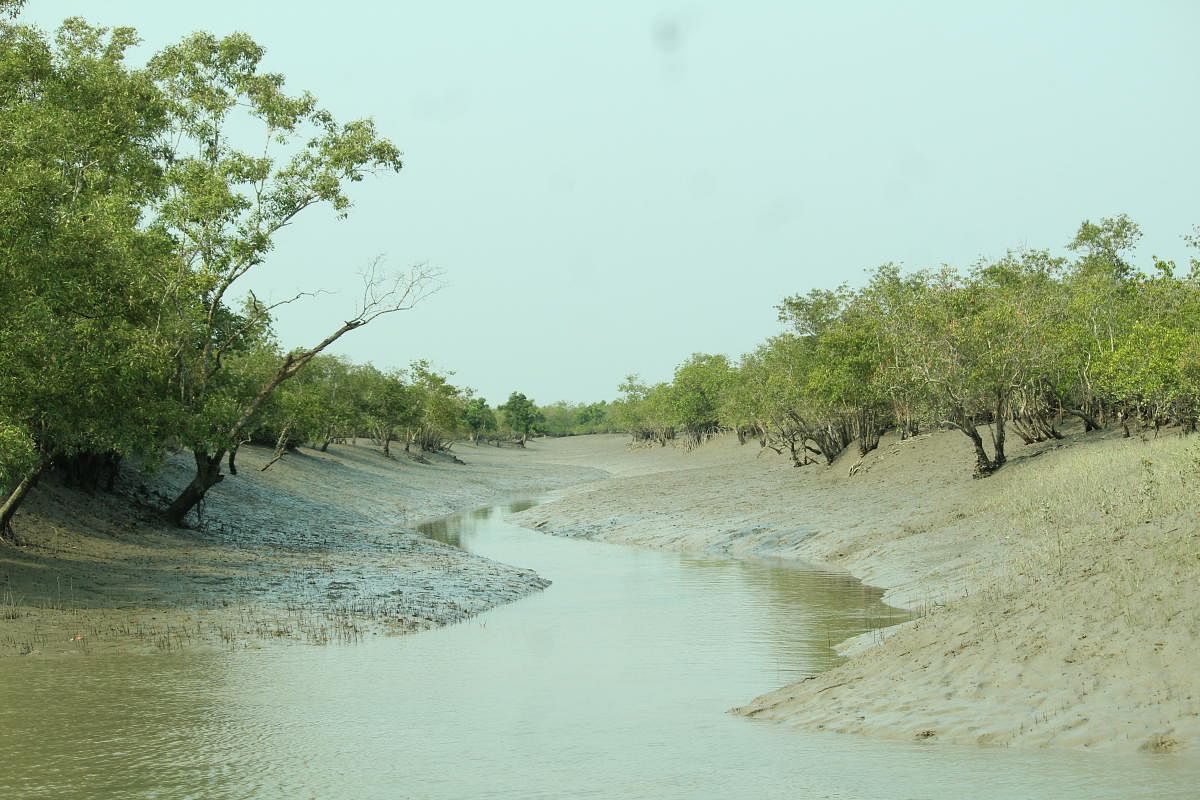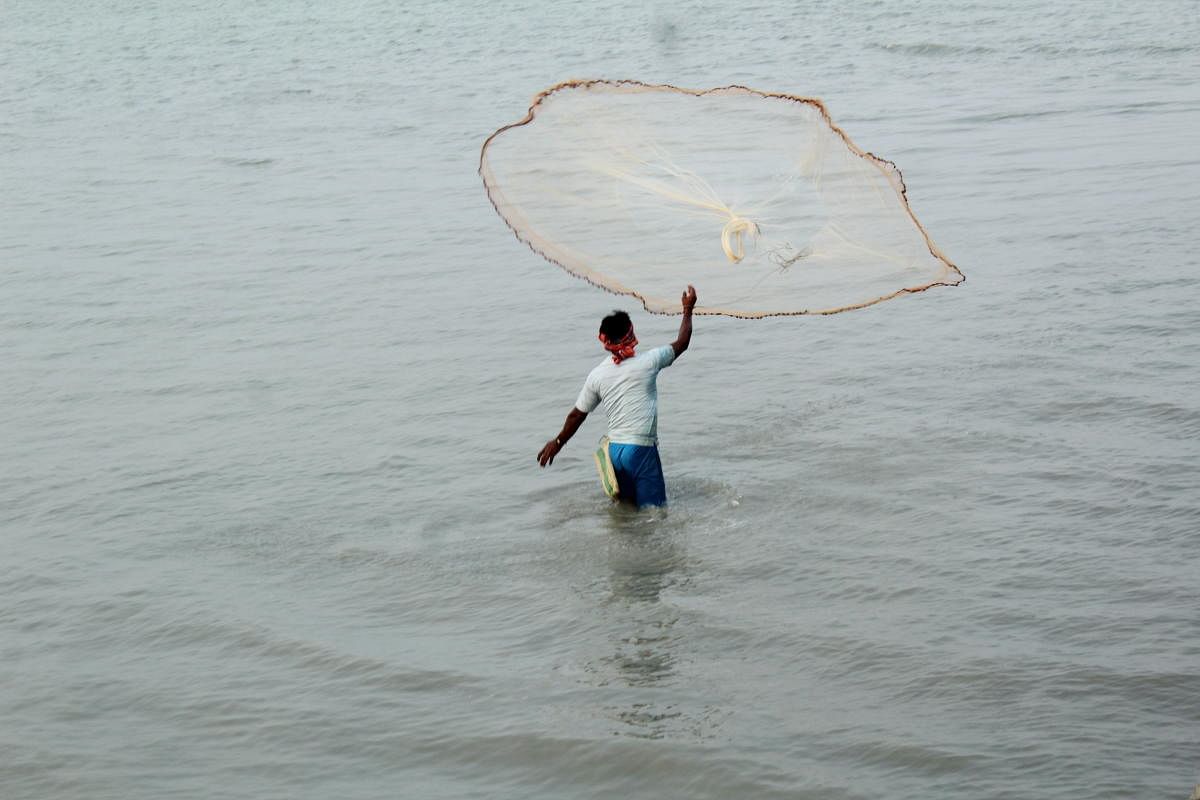

“Gosaba,” I hesitantly asked my fellow boat traveller, as I still couldn’t say a full sentence in Bengali. He pointed to an island in the opposite direction. It’s summer and I’m travelling to the world’s largest mangrove forest — the Sundarbans. After reaching the last point, Godkhali, I was directed to the ferry ghat by a police officer patrolling the area. After climbing down 30 flights of stairs, I boarded the boat going to Gosaba, the island that connects to Pakhiralay, where I was headed. Gosaba is derived from the Bengali word gosab which means monitor lizard. The owner of the lodge where I was staying told me how the island derived its name from the first time Rabindranath Tagore visited the island and saw a monitor lizard when he stepped off the boat.
Off the easternmost coast of India, the Sundarbans is a vast labyrinth of islands in the state of West Bengal. Located in the Gangetic delta formed by the confluence of the rivers Ganges, Brahmaputra and Meghna (Bangladesh), the Sundarbans span India and Bangladesh over an area of 10,000 km. It is an archipelago of 102 islands, of which 54 are inhabited by people, while the rest are forested. The Sundarbans is an abode for a wide variety of flora and fauna. The landscape hosts more than 400 bird species, which is a third of the bird species found in India. These forests are also unique habitats for the Bengal tiger. Sometimes, tigers venture out of ‘designated’ forests and into human habitation.
Occasionally, these trips result in livestock and human casualties. One day, we heard that a tiger had entered one of the nearby villages. Shortly after, the forest department tranquillised the tiger and released it back into the forest. The forest department has also erected a net fence around the forest to prevent the tigers from coming out, although this only acts as a psychological barrier. When the islanders venture into the forest to meet livelihood requirements, the only protection they carry with them is the blessing of the forest goddess Bonbibi. There are different lores behind how the young girl Bonbibi turned into the protector of the islanders from the evils of the forest like the tiger a.k.a. Dakshin Ray. During one of my evening walks, I heard prayer chants coming from a building nearby, and was told the people there were offering prayers to Bonbibi before they left for the forest the next morning. As one travels through these islands, one can find shrines of both goddesses and tigers.
The Sundarbans (sundar is beautiful and ban is forest in Bengali) derives its name from a dominant mangrove species called sundari (Heritiera fomes). As the Sundarbans acts as a buffer for the rest of West Bengal, protecting against flooding and high tides, there are numerous efforts by the government and non-government agencies to restore the mangrove forests to reduce the devastating impact of cyclones.
Although this is a waterscape, availability of drinking water is a major issue here. While drinking water is available for some through borewells and rainwater ponds, others rely on water cans coming from nearby towns/cities and solar water purifiers. The island dwellers are into agriculture, honey collection, and fishing. Given the high frequency of cyclones, the landscape is saline, impacting agriculture.
Currently, there are ongoing experiments to grow saline-resistant varieties of crops. To make people less reliant on forests for livelihood, different agencies have started programmes such as beekeeping and fish farming. I found it fascinating that some unique features such as rooster fights and rural theatre still exist in these remote regions while in towns and cities, people spend most of their time on digital devices. For dinner, I was once served a rooster that lost a fight!
I visited the Sundarbans during the scorching summer, however, the best time to visit is between November and February as the weather is more pleasant. The Sundarbans is an enigmatic group of islands that’s fraught with challenges — primarily for those who live there, but also for travellers like me. Yet, I’m drawn to this little-explored land, and eagerly await the time when I can visit this tidal land again.